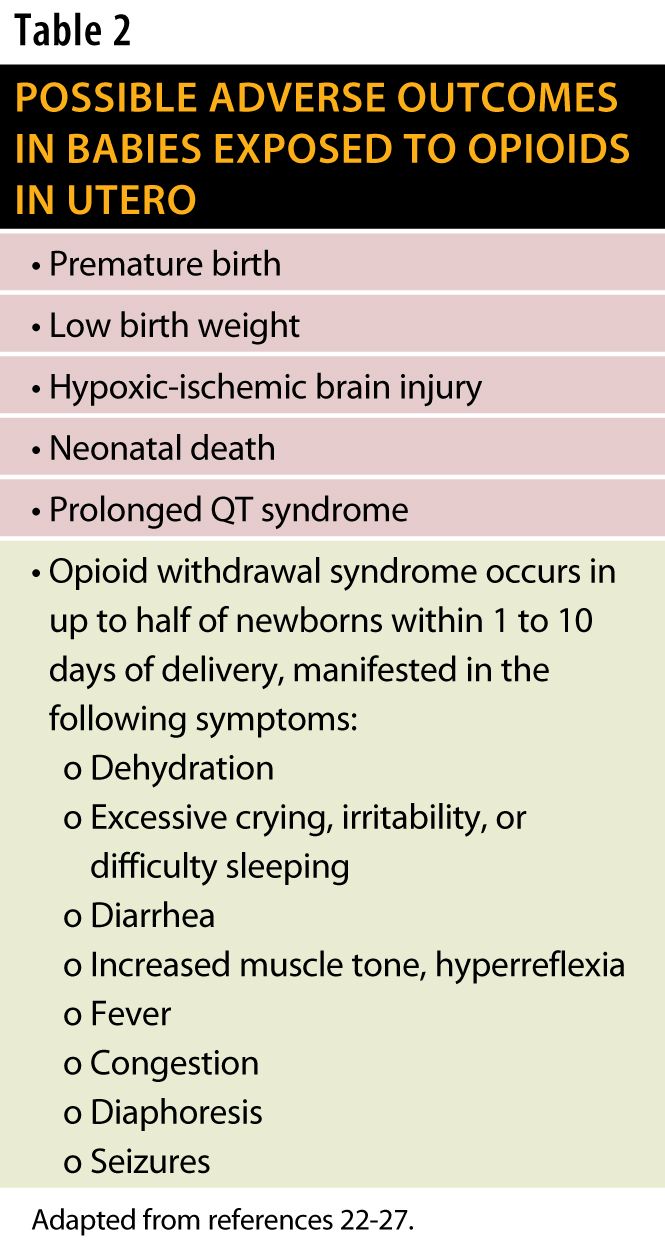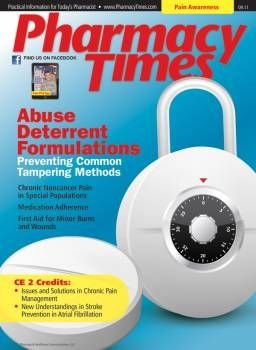Chronic Noncancer Pain in Special Populations
Managing pain in special populations requires a careful, individualized approach that takes into account each population’s unique needs and risk factors.
Chronic noncancer pain (CNP) is a stubborn problem, even in uncomplicated patients. (Cancer pain is somewhat different, depending on the patient’s prognosis.) Persisting after an injury has healed or having no discernible origin, CNP upsets patients and their loved ones, stymies clinicians, and consumes health care systems’ resources.
People who have CNP often withdraw and curtail activities. Its comorbidities—insomnia, depression (including suicidal ideation), anxiety, and fatigue—generate a syndrome that is exceedingly difficult to treat successfully. Table 11 reviews the basics of CNP management. When the patient is a member of a special population, treatment decisions become much more complicated.2-9

Four populations require special consideration when it comes to CNP: substance abusers (SAs) or addicts; children and adolescents; the cognitively impaired; and pregnant women.
Pain and Substance Abuse or Addiction
Clinicians are often apprehensive about patients who abuse or are addicted to substances and report CNP. Research supports increased vigilance: SAs tend to report more severe pain and functional interference, and have more psychiatric disorders and chronically painful conditions. The SA can be unresponsive, uncooperative, irritable, manipulative, or agitated. It is imperative to remember that SA patients can have real pain instead of passing moral judgment or considering these patients to be criminal.
Current thinking—the disease model of addiction—associates SAs with genetic, biologic, and environmental influences. In addition, SAs develop complex and possibly permanent brain changes. Substance abuse and addiction activate common pathways and neurotransmitters, leading to exaggerated pain response.10
For the SA, treatment must include nonpharmacologic interventions and treatment of any comorbid mental illness. Because the SA is prone to drug misuse, abuse, and addiction, nonopioids are preferred. Opioids are completely contraindicated in patients who are actively using illicit drugs. Those who have severe or intractable pain may need opioids, but should be monitored often. An addiction specialist may be the best person to coordinate treatment,11 and pharmacists should recommend abuse deterrent formulations.
Ouch! Pediatric Pain
Pediatric patients may be the last population envisioned when we think of pain, but up to 5% of children experience CNP.1,12 Some clinicians may dismiss CNP as “growing pain” or attention-seeking behavior, but pain is real to the child and the likelihood that they will outgrow it is slim.1 Sometimes childhood diseases or conditions (eg, juvenile arthritis, migraine) cause CNP, but clinicians usually cannot find a cause. Family changes and stress are often implicated.1
Parental feelings and beliefs influence how the child is diagnosed and managed, interacts with clinicians, and responds to treatment. Parents, as legal guardians, sometimes decline tests (fearing they will add to the child’s pain) or refuse treatment.13,14 If the parent becomes a problem, family therapy is needed.
Most children have CNP-related activity limitations that worsen with age. In adolescents, girls are 1.6 times more likely than boys to forego activity because of pain.12 Pain may cause children to miss school or withdraw from peer interactions, which slows social, emotional, and intellectual development.1,12
Children and adolescents are at high risk of developing maladaptive coping mechanisms. Some assessment tools are available to help children discuss and describe their pain, including the “pain faces” visual analog scale (VAS) and pictorial figures that allow children to “color” their pain. Once underlying causes are found, treatment principles mimic those used in adults, but the primary goal is to reduce school absenteeism.
Initial interventions should include a mental health referral to learn coping mechanisms and reduce catastrophizing and anxiety.1 Physical therapy and exercise are important. Analgesics (and triptans, especially in disintegrating dosage forms, if migraine is an issue) can be employed at age-appropriate doses. Acetaminophen, ibuprofen, and naproxen are available in various dosage forms for pediatric use; aspirin should be used with discretion because it may provoke Reye’s syndrome. Narcotics can be used for severe pain; parents need to be vigilant, however, because prescription drug abuse is a national epidemic, especially among youths and young adults. Adjunctive antidepressants and antiepileptics may also be useful.1
Impaired Cognition and Pain
Cognitively impaired patients communicate poorly and may be unable to describe pain or discomfort accurately. Unable to accurately vocalize their pain, they may act out behaviorally with combative or agitated behaviors; family and clinicians often misinterpret these behaviors.15
Most patients with mild-to-moderate cognitive impairment can complete pain assessment scales, but they report current pain more accurately than past pain, limiting their ability to describe pain duration. A VAS can confuse cognitively impaired people. Asking them to react to a list of words to describe their pain may be better.16,17

Clinicians should be mindful that cognitively impaired patients often are undermedicated.18,19 The Hospice Foundation recommends a simple rule: If the clinician would expect a cognitively intact person to experience pain in the specific circumstances, assume that the patient is experiencing pain and provide the same analgesia that a cognitively intact person would need.20
Mild pain can be treated with acetaminophen, nonsteroidal anti-inflammatory drugs (NSAIDs), or opioids. Chronic pain treatment should follow the World Health Organization’s pain ladder. If the patient is geriatric, the caveats provided by the American Geriatrics Society (AGS) Panel on Persistent Pain in Older Persons21 with regard to the analgesic ladder should be taken into account. For example, the panel advises caution and frequent renal function monitoring when prescribing cyclooxygenase-2 inhibitors and other NSAIDs.
Baby on Board: Treating for Two
Pregnant women sometimes experience CNP. What is the best way to treat the mother while keeping the fetus (who cannot consent to treatment) safe? Most women understand that they should minimize medication use when pregnant. But when pain requires treatment, little research is available to guide decisions. The safest analgesics are acetaminophen and NSAIDs (between 4 and 32 weeks gestation), used sparingly.1
Opioid use in pregnant woman has generally been studied in methadone maintenance treatment or labor studies. Some data associate continuous opioid treatment during pregnancy with unwanted outcomes in the newborn (Table 222-27), but it’s difficult to determine whether the opioid or other maternal behaviors or exposure actually cause these outcomes.20-25 Consequently, experts recommend avoiding opioids or using them only in the lowest doses for the shortest time possible for severe disabling pain in pregnant women.11
Conclusion
When members of special populations need analgesia, prescribers and pharmacists need to take special care. Pain is an equal-opportunity affliction, and we shouldn’t discriminate when it comes to treatment.
Ms. Wick is a senior clinical research pharmacist at the National Cancer Institute, National Institutes of Health, Bethesda, Maryland. The views expressed are those of the author and not those of any government agency.
References
1. Marcus DA. Chronic Pain: A Primary Care Guide to Practical Management. Totowa, NJ: Humana Press; 2005.
2. Breivik H, Collett B, Ventafridda V, et al. Survey of chronic pain in Europe: Prevalence, impact on daily life, and treatment. Eur J Pain. 2006;10:287-333.
3. Roth-Isigkeit A, Thyen U, Stöven H, et al. Pain among children and adolescents: restrictions in daily living and triggering factors. Pediatrics. 2005;115(2):e152-e162.
4. Cosby AG, Hitt HC, Thornton-Neaves T, et al. Profiles of pain in Mississippi: results from the Southern Pain Prevalence Study. J Miss State Medical Assoc. 2005;46:301-309.
5. Karoly P, Ruehlman LS. Psychosocial aspects of pain-related life task interference: an exploratory analysis in a general population sample. Pain Medicine. 2007;8:563-572.
6. Côté P, Kristman V, Vidmar M, et al. The prevalence and incidence of work absenteeism involving neck pain. Spine. 2008;33(4 suppl.):S192-S198.
7. Stewart WF, Ricci JA, Chee E, et al. Lost productive time and cost due to common pain conditions in the US workforce. JAMA. 2003;290:2443-2454.
8. Mailis-Gagnon A, Yegneswaran B, Lakha SF, et al. Pain characteristics and demographics of patients attending a university-affiliated pain clinic in Toronto, Ontario. Pain Research and Management. 2007;12:93-99.
9. Ratcliffe GE, Enns MW, Belik SL, Sareen J. Chronic pain conditions and suicidal ideation and suicide attempts: an epidemiologic perspective. Clinical Journal of Pain. 2008;24:204-210.
10. Neighbor ML, Dance TR, Hawk M, Kohn MA. Heightened pain perception in illicit substance-using patients in the ED: implications for management. Am J Emerg Med. 2011;29:50-56.
11. Chou R, Fanciullo GJ, Fine PG, et al. American Pain Society-American Academy of Pain Medicine Opioids Guidelines Panel. Clinical guidelines for the use of chronic opioid therapy in chronic noncancer pain. J Pain. 2009;10:113-130.
12. Ramage-Morin PL, Gilmour H. Chronic pain at ages 12 to 44. Health Rep. 2010;21:53-61.
13. Caes L, Vervoort T, Eccleston C, Vandenhende M, Goubert L. Parental catastrophizing about child’s pain and its relationship with activity restriction: the mediating role of parental distress. Pain. 2011;152:212-222.
14. Palermo TM, Eccleston C. Parents of children and adolescents with chronic pain. Pain. 2009;146:15-17.
15. McCracken LM, Iverson GL. Predicting complaints of impaired cognitive functioning in patients with chronic pain. J Pain Symptom Manage. 2001;21:392-396.
16. Ferrell BA, Ferrell BR, Rivera L. Pain in cognitively impaired nursing home patients. J Pain Symptom Manage. 1995;10:591-598.
17. Chibnall JT, Tait RC. Pain assessment in cognitively impaired and unimpaired older adults: a comparison of four scales. Pain. 2001;92:173-186.
18. Horgas AL, Tsai PF. Analgesic drug prescription and use in cognitively impaired nursing home residents. Nurs Res. 1998;47:235-242.
19. Nygaard HA, Jarland M. Are nursing home patients with dementia diagnosis at increased risk for inadequate pain treatment? Int J Geriatr Psychiatry. 2005;20:730-737.
20. Herr K, Decker S; Hospice Foundation. Older adults with severe cognitive impairment: Assessment of pain. www.hospicefoundation.org/teleconference/books/lwg2006/herr_decker.pdf. Accessed July 22, 2011.
21. AGS Panel on Persistent Pain in Older Persons. The management of persistent pain in older persons. J Am Geriatr Soc. 2002;50(suppl.):S205-S224.
22. Schick B, Hom M, Tolosa J, Librizzi R, Donnenfeld A. Preliminary analysis of first trimester exposure to oxycodone and hydrocodone. Reprod Toxicol. 1996;10:162.
23. Lainwala S, Brown ER, Weinschenk NP, Blackwell MT, Hagadorn JI. A retrospective study of length of hospital stay in infants treated for neonatal abstinence syndrome with methadone versus oral morphine preparations. Adv Neonatal Care. 2005;5:265-272.
24. Blaser A, Pulzer F, Knupfer M, et al. Drug withdrawal in newborns: clinical data of 49 infants with intrauterine drug exposure: what should be done? Klin Padiatr. 2008;220:308-315.
25. Sharpe C, Kuschel C. Outcomes of infants born to mothers receiving methadone for pain management in pregnancy. Arch Dis Child Fetal Neonatal Ed. 2004;89:F33-F36.
26. Kellogg A, Rose CH, Harms RH, Watson WJ. Current trends in narcotic use in pregnancy and neonatal outcomes. Am J Obstet Gynecol. 2011;204:259.e1-e4.
27. Chanoff IJ, Burns WJ, Schnoll SH. Perinatal addiction: the effects of maternal narcotic and non-narcotic substance abuse on the fetus and neonate. NIDA Res Monogr. 1984;49:220-226.

